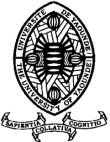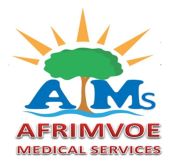Profil Histologique des Produits d’Avortements Spontanés à Abidjan
Histological Features of Spontaneous Abortion Products in Abidjan
DOI :
https://doi.org/10.5281/hra.v2i11.6138Mots-clés :
histologie, avortements, chromosomes, AbidjanRésumé
RÉSUMÉ
Introduction. L’avortement est une pratique courante en Côte d’Ivoire. Environ 43% des femmes de 15 à 49 ans interrogées sur cette question déclarent avoir eu un avortement provoqué. Les avortements spontanés peuvent survenir chez toutes les femmes durant leur vie reproductrice. Le risque augmente avec l’âge maternel. Leur répétition nécessite une investigation en particulier pour les couples dépourvus de progéniture. L’objectif de cette étude était de décrire les aspects histologiques des avortements spontanés à Abidjan. Matériel et méthodes. Une étude transversale conduite au laboratoire central du Plateau et l’UFR Sciences Pharmaceutiques et Biologiques de Côte d’Ivoire, a porté sur des blocs d’inclusion à paraffine contenant des restes d’avortements. Les prélèvements ont été adressés de janvier 2021 à avril 2023 sur lesquels des coupes histologiques ont été effectuées. Les colorations d’hématoxyline-éosine et de Giemsa ont été réalisées pour examen microscopique. Résultats. Les blocs d’inclusion à paraffine ont été obtenus à partir de produits d’avortements de 127 patientes dont 26 issus d’avortements spontanés soit 20,4% (26/127). L’âge moyen des patientes était de 35,4 ± 5,0 ans avec des extrêmes de 26 et 43 ans. L’analyse histologique des produits d’avortements spontanés a mis en évidence 15 cas évocateurs d’aberrations chromosomiques (57,9%), 8 évocateurs d’une inflammation (30,7%), 2 évocateurs d’une mole hydatiforme (7,6%) et 1 évocateur d’une infection (3,8%). Conclusion. L’histologie des produits d’avortements spontanés à Abidjan était caractérisée principalement par des aspects en faveur d’aberrations chromosomiques. Le recours à la FISH et/ou à la biologie moléculaire permettrait d’identifier les chromosomes responsables de ces anomalies.
ABSTRACT
Introduction. Abortion is a common practice in Côte d’Ivoire. Around 43% of women aged 15 to 49 surveyed on this question say they have had an induced abortion. Spontaneous abortions can occur in all women during their reproductive life. The risk increases with maternal age. Their recurrence requires investigation, particularly for couples without offspring. The objective of this study was to describe the histological aspects of the spontaneous abortions in Abidjan, Côte d’Ivoire. Material and methods. A cross-sectional study was conducted at the central laboratory of Plateau and the UFR of Pharmaceutical and Biological Sciences of Côte d'Ivoire. It used paraffin embedding blocks containing abortion remains. These abortion remains were sent to the central laboratory from January 2021 to April 2023. Histological sections were carried out, and hematoxylin-eosin and Giemsa stainings were performed for microscopic examination. Results. Paraffin embedding blocks were made from the abortion remains from 127 patients, including 26 spontaneous abortions corresponding to 20.4% of the cases (26/127). The average age of the patients was 35.4 ± 5.0 years with extremes at 26 and 43 years. The histological examination of the spontaneous abortion products revealed 15 cases suggestive of chromosomal aberrations (57.9%), 8 suggestive of inflammation (30.7%), 2 suggestive of a hydatiform mole (7 .6%) and 1 suggestive of an infection (3.8%). Conclusion. The histological features of the spontaneous abortion products analyzed in Abidjan was mainly characterized by aspects suggesting chromosomal aberrations. The use of FISH and/or molecular biology would help identify the chromosomes involved in these anomalies.
Références
Desgrées du Loû Annabel, Msellati Philippe, Viho I., Welffens-Ekra C. Le recours à l’avortement provoqué à Abidjan : une cause de la baisse de la fécondité ? Population. 1999;3(54):427‑46.
Joseph Bénie Bi Vroh, Issaka Tiembre, Harvey Attoh-Touré, Daniel Ekra Kouadio, Lucien Kouakou, Lazare Coulibaly, Hyacinthe Andoh Kouakou,, Janine Tagliante-Saracino. Épidémiologie des avortements provoqués en Côte d’Ivoire. Santé Publique. 2012;24:67‑76.
Beucher G. Prise en charge des fausses-couches spontanées du premier trimestre. J Gynécologie Obstétrique Biol Reprod. 1 mai 2010;39(3, Supplement):F3‑10.
McCarthy FP, Khashan AS, North RA, Rahma MB, Walker JJ, Baker PN, et al. Pregnancy loss managed by cervical dilatation and curettage increases the risk of spontaneous preterm birth. Hum Reprod Oxf Engl. déc 2013;28(12):3197‑206.
Sun Y., Zhao H. The research status of psychological problems and intervention in patients with spontaneous abortion. Chin J Nurs. 2013;(48):648‑51.
Andalib A, Rezaie A, Oreizy F, Shafiei K, Baluchi S. A study on stress, depression and NK cytotoxic potential in women with recurrent spontaneous abortion. Iran J Allergy Asthma Immunol. mars 2006;5(1):9‑16.
Magnus MC, Wilcox AJ, Morken NH, Weinberg CR, Håberg SE. Role of maternal age and pregnancy history in risk of miscarriage: prospective register based study. BMJ. 20 mars 2019;364:l869.
Zhao J, Huang B, Li N, Wang X, Xu B, Li Y. Relationship between advanced maternal age and decline of endometrial receptivity: a systematic review and meta-analysis. Aging. 27 févr 2023;15(7):2460‑72.
Hu X, Miao M, Bai Y, Cheng N, Ren X. Reproductive Factors and Risk of Spontaneous Abortion in the Jinchang Cohort. Int J Environ Res Public Health. 2 nov 2018;15(11):2444.
Zhang X, Fan J, Chen Y, Wang J, Song Z, Zhao J, et al. Cytogenetic Analysis of the Products of Conception After Spontaneous Abortion in the First Trimester. Cytogenet Genome Res. 2021;161(3‑4):120‑31.
Minebois H, De Souza A, Mezan de Malartic C, Agopiantz M, Guillet May F, Morel O, et al. Endométriose et fausse couche spontanée. Méta-analyse et revue systématique de la littérature. Gynécologie Obstétrique Fertil Sénologie. 1 juill 2017;45(7):393‑9.
Belleau J.L’expérience des femmes Consultant pour un avortement spontané sans prise en charge chirurgicale au CHU Sainte Justine [Internet]. [cité 24 juill 2024]. Disponible sur: https://depot-e.uqtr.ca/id/eprint/7821/1/031262818.pdf
Amari A,, Alla R. Les causes des avortements spontanés à Tiaret [Internet]. Faculté Sciences de la Nature et de la Vie; 2021. Disponible sur: http://dspace.univ-tiaret.dz/handle/123456789/7626
Sepou A, Ngbale R, Yanza MC, Domande-Modanga Z, Nguembi E. Analyse des avortements à la maternité de l’hôpital communautaire de Bangui. Med Trop. 2004;(64):61‑5.
Nacer-Eddine Hammouda. Age moyen au premier mariage et écart d’âge entre époux : quelles méthodes d’estimation adopter dans le cas algérien ? 2009 [cité 12 août 2024]; Disponible sur: http://rgdoi.net/10.13140/2.1.4664.0007
Antoine P. Les complexités de la nuptialité : de la précocité des unions féminines à la polygamie masculine en Afrique. 2002;25p.
Adjamagbo A. Récits de jeunes filles rurales dans l’Ouest ivoirien. Les rapports de genre ont une histoire. Afrique contemporaine. 2016;126‑8.
Pylyp LY, Spynenko LO, Verhoglyad NV, Mishenko AO, Mykytenko DO, Zukin VD. Chromosomal abnormalities in products of conception of first-trimester miscarriages detected by conventional cytogenetic analysis: a review of 1000 cases. J Assist Reprod Genet. févr 2018;35(2):265‑71.
Van den Berg Merel MJ, Van Maarle Merel C, Madelon van Wely, Mariëtte Goddijn. Genetics of early miscarriage. Biochim Biophys Acta. 2012;1822(12):1951‑9.
Wu T, Yin B, Zhu Y, Li G, Ye L, Chen C, et al. Molecular cytogenetic analysis of early spontaneous abortions conceived from varying assisted reproductive technology procedures. Mol Cytogenet. déc 2016;9(1):79.
Bianco K , Aaron B Caughey, Brian L Shaffer, Regina Davis, Mary E Norton. History of miscarriage and increased incidence of fetal aneuploidy in subsequent pregnancy. Obstet Gynecol. 2006;107(5):1098‑102.
Miao ZY, Liu XY, Wu H, Hou XF, Lv N, Wang X, et al. Cytogenetic analysis of 2959 couples with spontaneous abortion and detailed analysis of rare karyotypes. J Genet. 2022;101:10.
Park SJ, Min JY, Kang JS, Yang BG, Hwang SY, Han SH. Chromosomal abnormalities of 19,000 couples with recurrent spontaneous abortions: a multicenter study. Fertil Steril. mai 2022;117(5):1015‑25.
Ngueffo LS, Afouba AN, Yamen CD, Manghe R, Okono AK, Sando Z. Clinical and histopathological features of incomplete abortions at Yaounde Gyneco-Obstetric and Pediatric Hospital. Health Sci Dis [Internet]. 22 sept 2022 [cité 24 juill 2024];23(9). Disponible sur: https://www.hsd-fmsb.org/index.php/hsd/article/view/3673
Patrier S, Bolze PA. Diagnostic anatomopathologique des maladies trophoblastiques. Oncologie. juin 2014;16(6):279‑84.
Téléchargements
Publié-e
Comment citer
Numéro
Rubrique
Licence
(c) Tous droits réservés Alassani F, Yapo V, Bamba I, Sawadogo D, Honde M 2024

Cette œuvre est sous licence Creative Commons Attribution - Pas de Modification 4.0 International.
Authors who publish with this journal agree to the following terms:
- Authors retain copyright and grant the journal right of first publication with the work simultaneously licensed under a Creative Commons Attribution License CC BY-NC-ND 4.0 that allows others to share the work with an acknowledgement of the work's authorship and initial publication in this journal.
- Authors are able to enter into separate, additional contractual arrangements for the non-exclusive distribution of the journal's published version of the work (e.g., post it to an institutional repository or publish it in a book), with an acknowledgement of its initial publication in this journal.
- Authors are permitted and encouraged to post their work online (e.g., in institutional repositories or on their website) prior to and during the submission process, as it can lead to productive exchanges, as well as earlier and greater citation of published work










